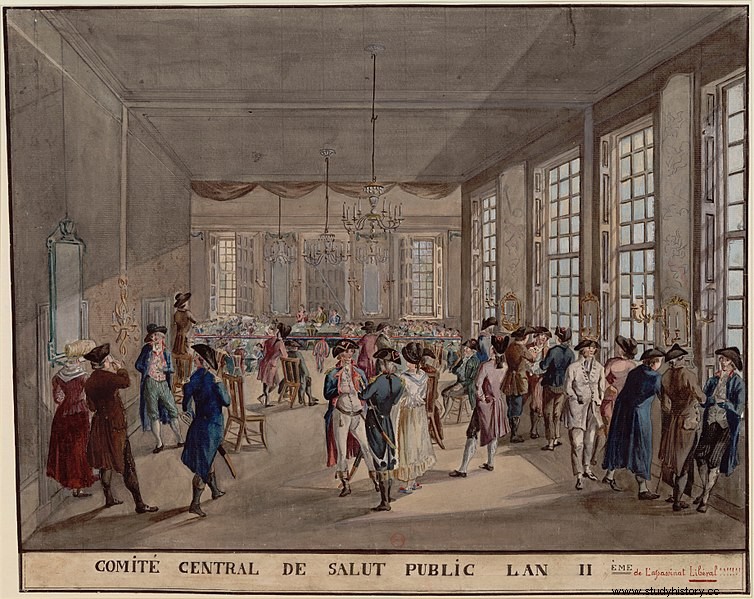- France is in the throes of major political upheavals. The king, guardian of the absolute monarchy, gradually becomes the symbol of a dying world.
- On August 10, 1792, the sans-culottes marched on the Tuileries Palace and took Louis XVI prisoner.
- This day marks the end of an era because the "monarchy is officially abolished" (Vergniaud) and opens a troubled period that History will call the Terror.
August 10, 1792 - September 20, 1792 and September 5, 1793 - July 28, 1794

Characters
Joseph Cambon
Georges Couthon
George Danton
Alain Fouquet
Jacques-René Hébert
Jean-Paul Marat
Maximilian of Robespierre
Antoine Saint-Just
Procedure
Since the imprisonment of the monarch, royalty is no more. The Legislative Assembly, which had become the Convention, became an extraordinary tribunal to judge Citizen Capet. The fear of a royalist claim engendered the September massacres, the banishment of refractory priests... The victory of Valmy on September 20, 1792 against the Prussian and Austrian monarchist troops who had come to liberate the king marked the end of the first Terror and the birth of the I re Republic (September 22).
However, the presence of enemies of the Revolution on the borders of France allowed the Montagnards to carry out a veritable witch hunt against the royalists inside the country (Vendée, Lyon, etc.). On January 21, 1793, King Louis XVI was guillotined. An extraordinary criminal court, called revolutionary, was created on March 10, 1793. On the 21st, the Terror established the surveillance committees, dependent on the Committee of General Security. It was against a background of economic, social and political instability (Marat was assassinated by Charlotte Corday on July 13, 1793) that the Terror was officially proclaimed on September 5.
The Committee of Public Safety, directed in particular by Couthon, Saint-Just and Robespierre, fights the opponents of the Revolution and drafts the law of suspects (September 17, 1793, authorizing the condemnation of "those who, having done nothing against freedom, have also done nothing for it" . Executions escalate. The Girondins (Brissot, Vergniaud) bear the brunt of this radicalization, then the Hébertists are eliminated (March 1794), before Danton falls on April 5, 1794. Justice becomes expeditious:the ax of the guillotine continues to be operated .
Robespierre brings the Terror to its climax with the decree of 22 Prairial Year II (June 10, 1794). From now on, the defendants, deprived of defense, are dependent on the revolutionary court of Paris which has only two choices:acquittal or death. But on 9 Thermidor of Year II, an internal war broke out between the Committee of General Security and the Committee of Public Safety, deemed too dictatorial. Robespierre in turn was dragged to the scaffold:the end of the Terror, July 28, 1794 (10 Thermidor).
Consequences
- The Terror remains a dark period in the history of France:if it saved the Revolution, through its actions, it also sinned against the ideas it defended by establishing a veritable dictatorship.
- The Directory succeeds the Terror.
